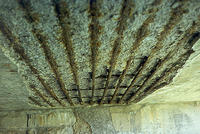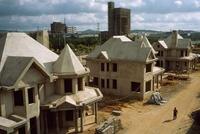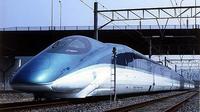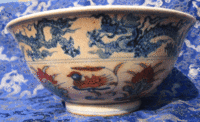-
Antibacterial stainless steel created
Materials scientists have devised a way of making stainless steel surfaces resistant to bacteria; by introducing silver or copper into the steel surface — rather than coating it on to the surface — the researchers have developed a technique that not only kills bacteria but is very hard and resistant to wear and tear during cleaning
-
-
"Amplified" nanotubes for efficient, loss-free grid
The current U.S. copper-based grid leaks electricity at an estimated 5 percent per 100 miles of transmission; Rice University researchers have achieved a breakthrough in the development of a cable that will make an efficient electric grid of the future possible; the armchair quantum wire (AQW) will be a weave of metallic nanotubes that can carry electricity with negligible loss over long distances
-
-
World's first cardboard vacuum cleaner unveiled

A U.K. vacuum cleaner manufacturer will market a high performance vacuum cleaner constructed out of recycled and recyclable materials; the device was designed by an industrial design student; the corrugated cardboard panels that form the body of the machine are easily replaced if damaged and cost just a tenth of the price of an equivalent plastic panel
-
-
Fire retardant shows promise -- if given space
Scientists have demonstrated that the more widely and uniformly dispersed nanoscale plates of clay are in a polymer, the more fire protection the nanocomposite material provides; when polymer — a type of polystyrene, used in packaging, insulation, plastic cutlery, and many other products — is imbued with nanometer scale plates of montmorillonite, the combination can create a material with unique properties or properties superior to those achievable by each component — clay or polymer — on its own
-
-
Japanese discovery could undermine China's rare earth dominance
A new discovery by Japanese researchers could break China’s stranglehold over rare Earth metals; Japanese geologists say they have found large deposits of rare Earth minerals on the floor of the Pacific Ocean; it is estimated that the mud of the Pacific Ocean contains 100 billion tons of these minerals
-
-
New technology makes textiles permanently germ-free

University of Georgia scientist develops a new technology that makes textiles permanently germ-free, targeting healthcare-associated infections; the new material effectively kills a wide spectrum of bacteria, yeasts, and molds that can cause disease, break down fabrics, create stains, and produce odors
-
-
Quake-resistant superelastic alloy developed
Japanese scientists added a small amount of nickel to an iron-based alloy, and found that the new material can recover its original shape at any temperature from -196 to 240 degrees Celsius; the material may be used in environments that are constantly exposed to extreme temperatures, such as joints and controls in cars, planes, and spacecraft; it may also help buildings cushion stress and violent movement in earthquakes
-
-
"Sensing skin" to monitor concrete infrastructure health inexpensively
In 2009, the American Society of Civil Engineers (ASCE) assigned the grade D to the overall quality of infrastructure in the United States and said that ongoing evaluation and maintenance of structures was one of five key areas necessary for improving that grade; civil engineers recently proposed a new method for the electronic, continual monitoring of structures
-
-
Bomb-proof bag for planes' luggage compartment developed

The blast-absorbing bag, named the Fly-Bag, features multiple layers of novel fabrics, composites, and coatings and is designed to be filled with passenger luggage and then placed in the hold of a plane; if one of the pieces of luggage inside the Fly-Bag had a bomb in it and the bomb exploded during the flight, the resulting blast would be absorbed by the bag owing to its complex fabric structure, preventing damage to the plane; fundamental to the design of the bag is the internal elastomeric coating and impregnation of fabric with Shear Thickening Fluids (STF); STFs work by increasing in viscosity in response to impact
-
-
New building material could help solve bridge woes
With infrastructure in the United States rapidly aging and in need of repair, new building materials made in Maine that make bridges cheaper, lighter, and more durable could help cash starved states undertake critical infrastructure investment; using lightweight hybrid composite beams, the Maine Department of Transportation (MDOT) has just completed the largest composite bridge in the world; the new bridge is projected to last at least 100 years; the material’s weight, cost, and durability have generated a lot of interest across the country
-
-
Ceramic armor receives development prize
New ceramic armor has many advantages: currently the ceramic composite offers a 30 percent weight saving compared with an armor plate of the same size made of alumina ceramics and is 15 percent lighter than another widely used ceramic armor, silicon carbide; it also requires a much lower furnace temperature meaning less energy is used and less CO2 is produced in manufacture, making it an environmentally-friendly product
-
-
New concrete could increase life of bridges by forty years

Researchers have developed a new type of concrete that could increase the lifespan of bridges by more than forty years compared to normal strength concrete; the more durable type of concrete minimizes shrinkage, a problem typically found in high-strength concrete; the new concrete is also less likely to crack, which reduces the ability for corrosive materials like chlorides from de-icing salts to seep into the bridge’s internal structure; the new concrete uses a lightweight porous type of sand
-
-
Surprise: Thomas Edison also invented the concrete house

Historians say Thomas Edison invented and patented in 1917 an innovative construction system to mass produce prefabricated and seamless concrete houses; most people associate this style of architectural design and type of building technology with the European avant-garde of the early twentieth century; originally motivated by the objective of providing a cost-effective prototype for the working-class home, Edison’s 1917 experiment in mass-production was one of Modernism’s first attempts to construct a building with a single material
-
-
Making high-speed rail tracks safer

High-speed rail requires prestressed concrete railroad ties, as wooden cross ties are too flexible; for these ties to be effective, prestressing forces must be applied at a considerable distance before the rail load is applied; this is called the transfer length; to resist the heavy impacts the concrete ties utilize about twenty steel wires, each stressed to around 7,000 pounds; if the prestressed force is not properly transferred, failures can occur in the track
-
-
Forensic science to foiling fakers of Chinese art

The field of Chinese art has become one of the hottest sectors of the global art market in recent years, and nowhere more so than in the demand for fine antique porcelain; prices for the finest Imperial porcelain have soared, but so have the ambitions of accomplished fakers, seeking to infiltrate exquisite new fakes into a market eager for top quality material; a joint effort by university researchers and an auction house will see the application of forensic science in the authentication of Chinese artifacts
-
- All
- Regional
- Water
- Biometrics
- Borders/Immig
- Business
- Cybersecurity
- Detection
- Disasters
- Government
- Infrastructure
- International
- Public health
- Public Safety
- Communication interoperabillity
- Emergency services
- Emergency medical services
- Fire
- First response
- IEDs
- Law Enforcement
- Law Enforcement Technology
- Military technology
- Nonlethal weapons
- Nuclear weapons
- Personal protection equipment
- Police
- Notification /alert systems
- Situational awareness
- Weapons systems
- Sci-Tech
- Sector Reports
- Surveillance
- Transportation
Advertising & Marketing: advertise@newswirepubs.com
Editorial: editor@newswirepubs.com
General: info@newswirepubs.com
2010-2011 © News Wire Publications, LLC News Wire Publications, LLC
220 Old Country Road | Suite 200 | Mineola | New York | 11501
Permissions and Policies
Editorial: editor@newswirepubs.com
General: info@newswirepubs.com
2010-2011 © News Wire Publications, LLC News Wire Publications, LLC
220 Old Country Road | Suite 200 | Mineola | New York | 11501
Permissions and Policies
